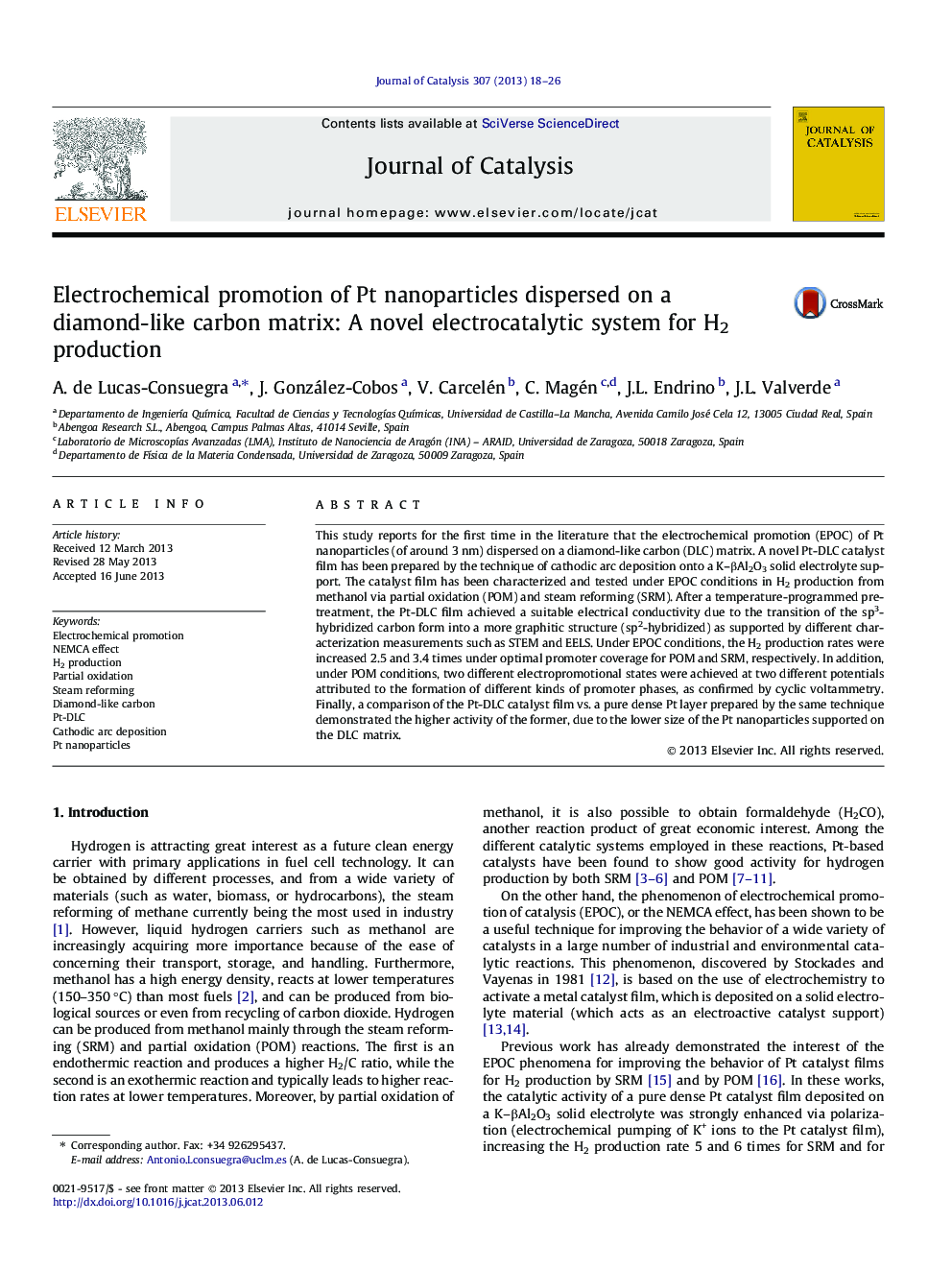| Article ID | Journal | Published Year | Pages | File Type |
|---|---|---|---|---|
| 61142 | Journal of Catalysis | 2013 | 9 Pages |
•The cathodic arc deposition technique led to a stable nanocomposite multilayer Pt-DLC thin film.•Pt nanoparticles can be dispersed on a DLC matrix for electrocatalytic applications.•The Pt nanoparticles could be electrochemically promoted by K+ ions for H2 production.•The Pt-DLC catalyst film is highly active and stable for the NEMCA experiments.
This study reports for the first time in the literature that the electrochemical promotion (EPOC) of Pt nanoparticles (of around 3 nm) dispersed on a diamond-like carbon (DLC) matrix. A novel Pt-DLC catalyst film has been prepared by the technique of cathodic arc deposition onto a K–βAl2O3 solid electrolyte support. The catalyst film has been characterized and tested under EPOC conditions in H2 production from methanol via partial oxidation (POM) and steam reforming (SRM). After a temperature-programmed pretreatment, the Pt-DLC film achieved a suitable electrical conductivity due to the transition of the sp3-hybridized carbon form into a more graphitic structure (sp2-hybridized) as supported by different characterization measurements such as STEM and EELS. Under EPOC conditions, the H2 production rates were increased 2.5 and 3.4 times under optimal promoter coverage for POM and SRM, respectively. In addition, under POM conditions, two different electropromotional states were achieved at two different potentials attributed to the formation of different kinds of promoter phases, as confirmed by cyclic voltammetry. Finally, a comparison of the Pt-DLC catalyst film vs. a pure dense Pt layer prepared by the same technique demonstrated the higher activity of the former, due to the lower size of the Pt nanoparticles supported on the DLC matrix.
Graphical abstractA novel electrochemical catalyst has been developed based on Pt nanoparticles (of around 3 nm) dispersed on a diamond-like carbon (DLC) matrix. This catalyst has been successfully electrochemically promoted by K+ ions for the H2 production from methanol and the catalytic activity has been improved up to more than 3 times under optimal promotion conditions.Figure optionsDownload full-size imageDownload high-quality image (99 K)Download as PowerPoint slide
